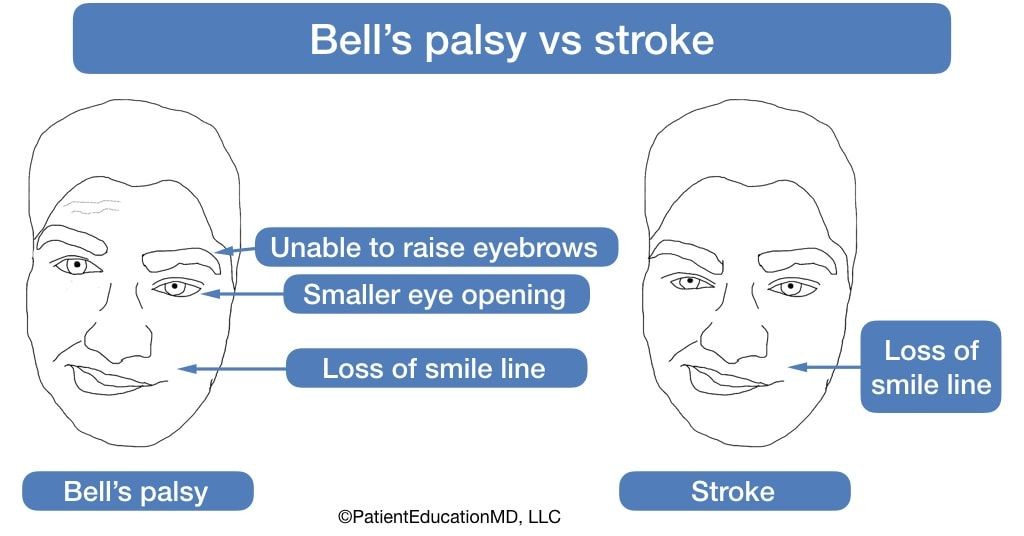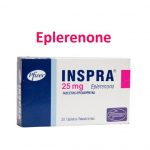
How Can You Differentiate Between Bell’s Palsy and a Stroke?
Bell’s palsy and stroke are brain-related medical conditions. Bell’s palsy causes temporary paralysis of facial muscles, while stroke occurs due to a blood clot or ruptured blood vessel in the brain.
Bell’s palsy and strokes both originate in the brain. While the symptoms of Bell’s palsy may resemble those of a stroke to the average person, they are fundamentally different. Bell’s palsy results from damage to a single nerve, whereas a stroke occurs due to a lack of oxygen and blood flow to the brain.
What is Bell’s Palsy vs. Stroke?
Although both conditions originate in the brain, they affect different areas of the body and brain. While Bell’s palsy can be alarming, stroke is a medical emergency requiring immediate professional attention. Understanding the distinction between Bell’s palsy and a stroke is crucial for an appropriate response in each situation.
What is Bell’s Palsy?
Bell’s palsy is a temporary weakness or paralysis (palsy) of facial muscles. It causes drooping of certain parts of the face, mostly on one side. Individuals with Bell’s palsy may experience difficulty closing an eye, smiling, or notice a drooping eyelid.
Bell’s palsy can affect anyone but is most common among individuals aged 15 to 60. It affects both genders equally.
What is a Stroke?
A stroke occurs when a blood vessel leading to or within the brain becomes blocked by a clot or ruptures. This medical emergency deprives a portion of the brain of oxygen and nutrients from the blood. In the United States, around 800,000 people experience a stroke annually.
Strokes have different causes depending on the type:
- Ischemic Strokes result from blood clots obstructing brain blood supply, which accounts for 87% of all strokes.
- Hemorrhagic Stroke occurs when a weakened blood vessel ruptures, typically due to aneurysms or arteriovenous malformations (AVMs).
- Transient Ischemic Attack (TIA) is a temporary clot, considered a mini-stroke, and serves as a warning sign for a more severe stroke.
- Cryptogenic Stroke refers to a blockage in a blood vessel leading to the brain. Strokes without an identifiable cause fall under this category.
- Brain Stem Stroke affects the brain stem, impacting both sides of the body and potentially causing a "locked state" characterized by an inability to move or speak below the neck.
What are the Symptoms and Signs of Bell’s Palsy vs. a Stroke?
Confusion often arises when comparing Bell’s palsy to a stroke since their initial symptoms seem similar. The facial paralysis caused by Bell’s palsy resembles stroke symptoms.
Symptoms of Bell’s Palsy
Bell’s palsy symptoms appear suddenly and worsen within the first 48 hours. The most common indications include:
- Loss of sensation in the face
- Impaired facial muscle movements, such as difficulties with blinking or smiling
- Headache
- Drooling
- Tearing
- Extreme sensitivity to sound in the affected ear (hyperacusis)
- Loss of taste on the front two-thirds of the tongue
- Trouble closing the eye on the affected side of the face or an inability to do so.
Symptoms of a Stroke
Recognizing and responding to a stroke promptly is crucial since every second matters. Acting swiftly can minimize brain damage caused by oxygen deprivation and potentially save lives.
The most common stroke symptoms include:
- Sudden weakness or numbness on one side of the face, arms, or legs
- Difficulty speaking, comprehending, or understanding speech
- Sudden loss of vision in one or both eyes
- Unexpected dizziness and coordination difficulties affecting balance and walking
- Severe and unanticipated headache
What are the Causes of Bell’s Palsy vs. a Stroke?
Bell’s palsy and strokes not only differ in their symptoms but also in their causes. Understanding the causes of each condition helps gauge their severity.
Causes of Bell’s Palsy
Bell’s palsy results from damage to the 7th cranial nerve, which controls facial muscles. The precise cause of this damage remains unknown, but it is often associated with viral infections.
Viral infections commonly linked to Bell’s palsy include:
- Chickenpox and shingles (herpes zoster)
- Cold sores and genital herpes (herpes simplex)
- Mumps (mumps virus)
- Infectious mononucleosis (Epstein-Barr)
- Respiratory illnesses (adenovirus)
- Flu (influenza B)
- Cytomegalovirus infections
- German measles (rubella)
- Respiratory illnesses (adenovirus)
Causes of a Stroke
Strokes result from blockages or ruptures of blood vessels leading to or within the brain. Various conditions can trigger or increase the risk of a stroke:
- High blood pressure
- High cholesterol
- Heart disease
- Diabetes
- Sickle Cell Disease
- History of stroke or transient ischemic attack
Diagnosing Bell’s Palsy vs. a Stroke
The diagnosis of Bell’s palsy does not require specific testing. Instead, doctors examine facial movements by asking patients to perform various muscle actions, including raising eyebrows, closing eyes, frowning, and smiling. If the cause of facial paralysis is still unclear due to other potential factors like a stroke, additional tests such as Electromyography (EMG) and CT or MRI scans may be conducted.
For stroke diagnosis, several factors are considered. Doctors employ multiple tests and imaging scans to assess the condition of the brain and blood supply, determining the location of the brain injury.
Diagnostic tests for strokes include:
- Physical and neurological examinations
- Medical history assessment to determine stroke or related condition history
- Lab tests (blood tests) to examine blood cell count, cholesterol levels, etc.
- CT or MRI scans to assess the severity and location of brain damage
- Measurement of blood flow to determine the affected vessel’s blood flow rate
- Additional diagnostic tests such as an Electroencephalogram (EEG) or an Evoked Response Test
Treatments for Bell’s Palsy vs. a Stroke
Treatment for Bell’s palsy varies significantly from stroke treatment, and most individuals with Bell’s palsy fully recover. The condition typically resolves spontaneously within a few months, with improvement noticeable after two weeks.
There is no universally recommended treatment regimen, and doctors may suggest a combination of medication and physical therapy. To prevent the drooping eye from drying out overnight, eye protection is typically advised.
Common treatments for Bell’s palsy include:
- Steroids, like prednisone, to alleviate inflammation
- Antiviral medication, such as acyclovir, if the underlying cause is known
- Analgesics for pain relief
- Physical therapy to stimulate facial nerves and muscles
Managing a stroke is considerably more complex, and treatment depends on the specific type of stroke experienced. Ischemic stroke treatment focuses on restoring blood flow to the brain, while hemorrhagic stroke treatment aims to control bleeding, reduce brain pressure, and maintain vital signs.
Sources:
American Stroke Association: "Common Diagnosis Methods."
American Stroke Association: "Ischemic Stroke."
American Stroke Association: "Types of Stroke."
CDC: "Stroke Signs and Symptoms."
CDC: "Conditions That Increase Risk for Stroke."
Johns Hopkins Medicine: "Bell’s Palsy."
Mayo Clinic: "Bell’s Palsy."
National Institute of Neurological Disorders and Stroke: "Bell’s Palsy Fact Sheet."
National Institute of Neurological Disorders and Stroke: "Brain Basics: Preventing Stroke."
Piedmont Healthcare: "The Difference Between Bell’s Palsy and a Stroke."
Stanford Health Care: "Treatment for Stroke."
St. Charles Healthcare: "Blood Tests to Diagnose Stroke."


